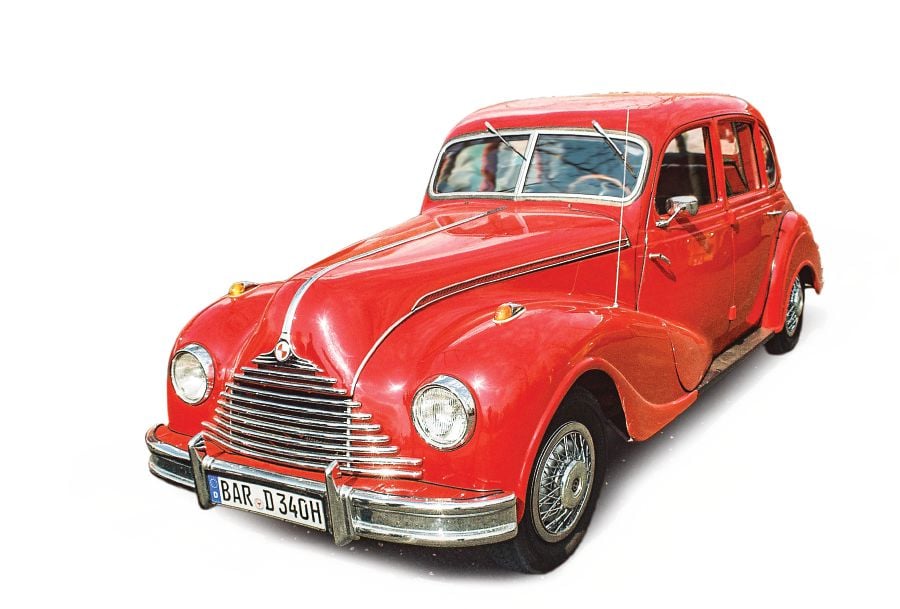WAR is hell but it makes for great stories. Among the thousands of war stories, one involved a trademark dispute between BMW and itself.
To explain this saga properly, I have to take you back to World War 2 when Adolf Hitler was in full swing and the mighty German industry backed him to the hilt with the latest technology and, for the most part, the best-built war machines.
BMW built aircraft engines for the Third Reich, and after the war, the victors put restrictions on the defeated country’s industrial output.
The winners went in and divided among themselves what they liked of Germany and took any intellectual property or take over production facilities as they saw fit.
Volkswagen AG (VW) was spared any interest because the allied powers, including the British industrial conglomerate that were offered dibs on Wolfsburg thought the Beetle was so ugly that it had no “real economic value”.
Which explains why the British automotive industry did not survive beyond the 1980s. It had failed to identify an opportunity. Good riddance.
We now have VW owning Bentley and BMW in charge of Rolls Royce and MINI. Now, we have German condescension wrapped in British snobbery, the appeal is irresistible.
Plutocrats are falling hand over fist to give the money they robbed from the 99 per cent to these marques for the honour of having a car with LED stars in its roof lining.
This is now but back in the days after the war, BMW wasn’t even allowed to build anything with an engine. The most complex product they were allowed to make were bicycles, and most of the time their presses were busied with pots and pans.
Although BMW was not allowed to build cars, it was building them and no one was stopping them.
No one could stop BMW because it was completely legitimate. In fact, the only people who did not want BMW to build cars in this story was BMW itself.
What? Yes. BMW was trying its best to stop itself from building cars.
If you feel confused and want to pull your hair out or slam your cranium against the corners of a sharp concrete pillar, stop.
Munich was furious that its Eisenach plant was taking the BMW 326 model and developing it into the BMW E340 and selling them when all HQ could do was fill up Mrs. Schneider’s kitchen cabinet.
Those who scored well during their “Geography of the Fatherland” pop quiz would have spotted that Eisenach was under the rule of the dynamic duo of Wilhelm Pieck and Otto Grotewohl as president and prime minister, respectively.
The rest of you can continue scratching your heads.
Eisenach was on the wrong side of the iron curtain and the Russians had taken over the plant and the new company was called the Russian BMW Company at Eisenach (not a direct translation of Sowjetische AG Maschinenbau Awtowelo, Werk BMW Eisenach or if accurately translated into English Soviet Awtowelo Co, Eisenach BMW Works).
The Russians found plans for the 326 and thought it had potential and began putting communist touches to make it more proletariat.
Somehow making things more proletariat also means making it uglier. Maybe this is a necessary step to make the products less desirable, given that the controlled economy is only ever good at mass-producing dissatisfaction.
BMW didn’t care that the Soviets had botched the plastic surgery on their favourite son, which made it look like an inbred.
No, what really clanged their bell was the fact that the Soviets insisted on putting a BMW badge on their monstrosity.
The shame was unbrearable, they tried everything to stop it.
The BMWs were desirable and continued in production until 1952 and the carmaker even produced a two-door coupe version called the 327.
The most obvious difference is the grille, which looks like a chrome pyramid, instead of the vertical twin kidney and small side vents under the round headlamps.
The Soviets modernised the face with the more horizontal grille and pushed the headlamps out onto the fenders to make it look more coherent and comfortable.
Some may argue that the E340 is probably a better-looking design, which was more elegant and had more stature, thanks to its prominent side pontoon fenders that blended onto the front doors.
The rear fender was given more prominence and this helped to anchor the car down visually and the two were linked by an elegant side step.
The design changes and the good fundamental engineering of the original car helped make the E340 a desirable car for nearly two decades after its original introduction in 1936.
In 1948, BMW was given permission to start building motorcycles, so it was really keen to stop BMWs from ruining the brand and it finally managed to dissolve BMW Eisenach in September 1949 while the brand’s use was finally halted in October the same year.
The Eisenach plant holds a sentimental place in BMW’s heart because it was the birthplace of BMW cars.
In 1928, BMW bought over Fahrzeugfabrik Eisenach A.G. that was building Austin 7s under licence and that was how the BMW roundel found its way onto motorcars.
The Eisenach plant is back in the BMW fold, producing pressing tools and also large exterior panels for its Rolls Royce brand.
By the way, the Soviets were not the only ones who got their hands on the original 326 drawings; British company Frazer Nash also had a set and it got together with aircraft company Bristol to produce exorbitantly priced, but really well made versions of the car called the Bristol 400 series.
Thanks to the “imperious” pricing, only real snobs could afford them, making the vehicles a true status symbol, unknown to the great unwashed but recognised only by the few.
How’s that for a great war story?





